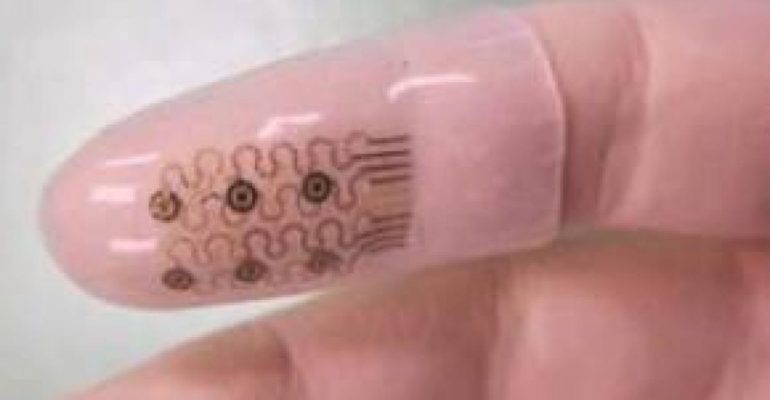
New Research Envisions Electronic Surgical Gloves
Flexible silicon-based electronics and special soft sensors formed the core of the research that aimed to provide guidelines to building actual useful electronic gloves of the future. The team envisions that surgeons one day will be able to use their fingers to identify tissue and be able to immediately ablate it without reaching for another instrument.
From the study abstract in journal Nanotechnology:
We describe the use of semiconductor nanomaterials, advanced fabrication methods and unusual device designs for a class of electronics capable of integration onto the inner and outer surfaces of thin, elastomeric sheets in closed-tube geometries, specially formed for mounting on the fingertips. Multifunctional systems of this type allow electrotactile stimulation with electrode arrays multiplexed using silicon nanomembrane (Si NM) diodes, high-sensitivity strain monitoring with Si NM gauges, and tactile sensing with elastomeric capacitors. Analytical calculations and finite element modeling of the mechanics quantitatively capture the key behaviors during fabrication/assembly, mounting and use. The results provide design guidelines that highlight the importance of the NM geometry in achieving the required mechanical properties. This type of technology could be used in applications ranging from human–machine interfaces to ‘instrumented’ surgical gloves and many others.
Free article in Nanotechnology: Silicon nanomembranes for fingertip electronics
Institute of Physics press release: The power to heal at the tips of your fingers…